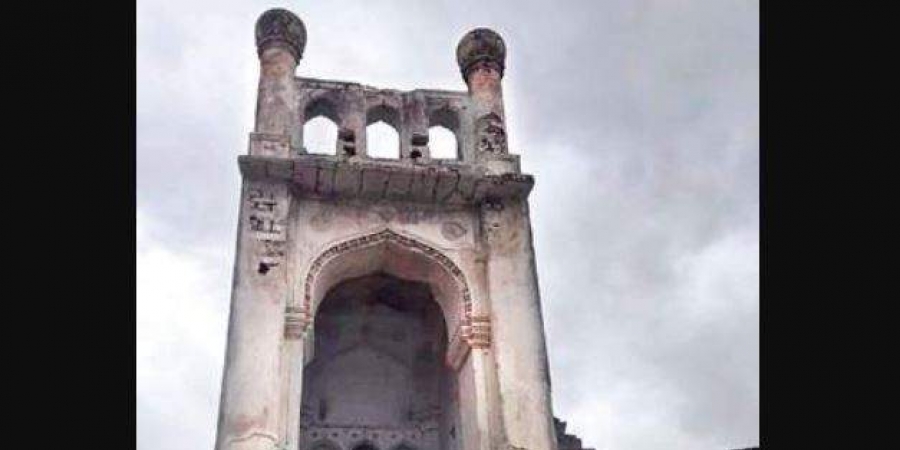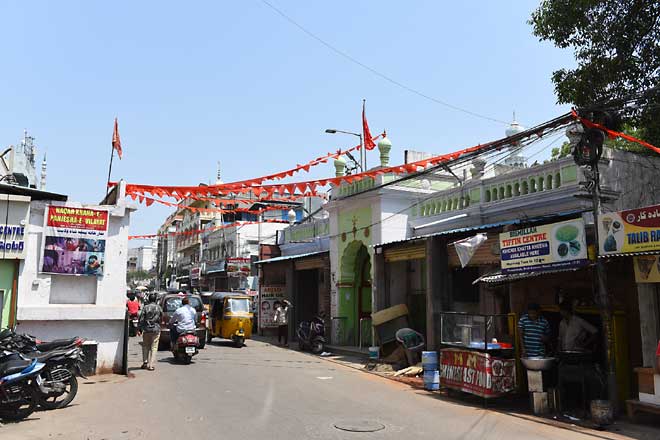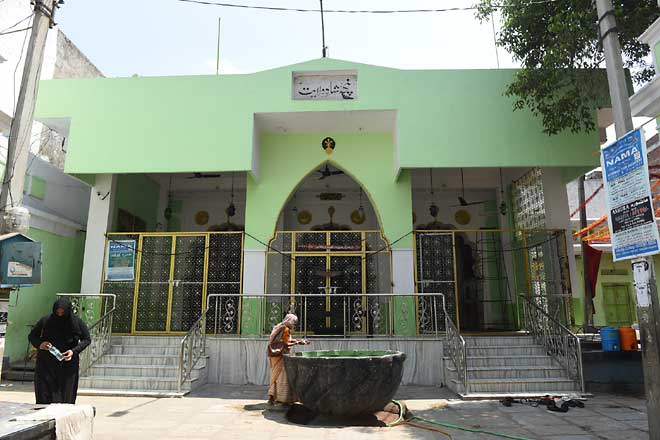Hyderabad, TELANGANA :
Once the land on which the Jino-ki-Masjid and the Dargah was build was to the tune of 600 acre.
Hyderabad :
Located a stone’s throw away from the Dargah Hazrath Syed Shah Imaad Uddin Mahmood Al Hussaini, a nondescript structure stands out in front of the scenic hilltop on the banks of Mir Alam tank. This Qutub Shahi structure, popularly known as the Jino-ki-Masjid, may well be the ‘smallest mosque’ in the world.
Less than 10 sq m in area, this structure has the traditional elements of Qutub Shahi architecture including turrets and a big arch, under which there is a small space for devotees to pray. However, although it is located within the complex of the Dargah, the small structure stands dilapidated. The lime plaster has given away at various places, revealing the skeletal brickwork underneath.
The turrets are also broken at places, and so arch. The way to the mosque is also rocky, with no clear path. The mosque’s state could very well pose as a risk for visitors. The mosque gains importance as the Dargah complex was home to Syed Shah Imamuddin Husaini alias Mir Mahmood Nimatullahi, one of the oldest sufis of Hyderabad. In ‘Landmarks of the Deccan’, its author Syed Ali Asgar Bilgrami wrote, “He first came to Hyderabad from Najaf (Mesopotamia) during the reign of Sultan Abdullah Qutub Shah and stayed on this hillock.”
Mahmood had laid several buildings erected on this hill. “The mason who worked here were paid over and above the wages and the pregnant women-labourers were paid double the wages,” Landmarks of the Deccan said, adding that since no one knew his source of income, “it was a general belief that the Saint had some supernatural means of income”.
Once the land on which the Jino-ki-Masjid and the Dargah was build was to the tune of 600 acre. However, now, with time, most of it is occupied with houses built on one side of the hillock. The place comes alive during Urs, usually held on the 13th Shaban of the Islamic Calender, which was on April 19. During that time, many visit the Dargah, and hence it becomes important to conserve and repair the ‘smallest mosque’.
source: http://www.newindianexpress.com / The New Indian Express / Home> States> Telangana / by Express News Service / April 23rd, 2019











